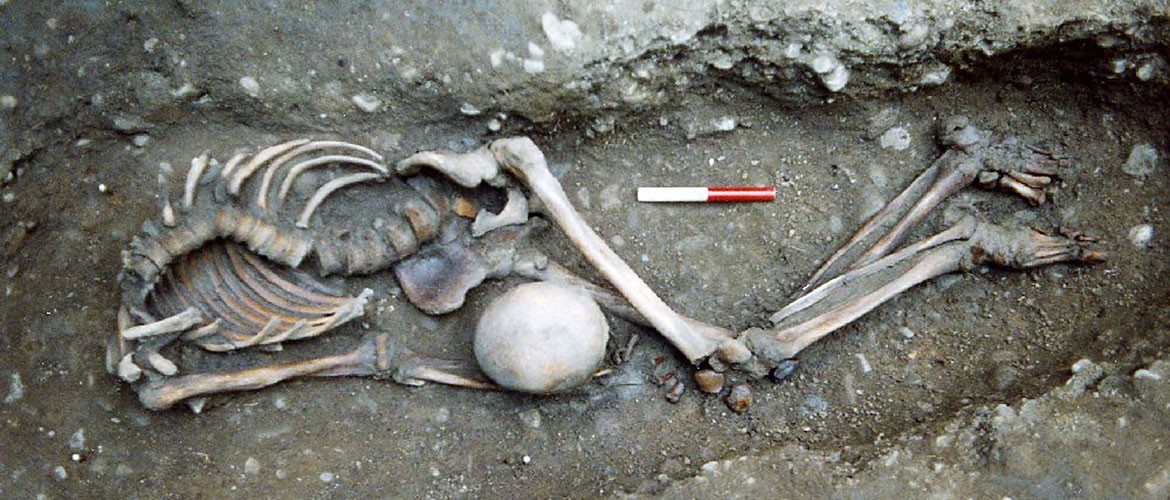We knew ancient skeletons discovered in York gardens dated from Roman times. And thanks to the work of archaeologists, we know that many of them lived violent lives and died violent deaths.
Now one more extraordinary fact has been revealed: where they came from.
Archaeologists exhumed 80 skeletons from gardens at Driffield Terrace after their discovery in 2004. They date from the late first century AD to the 4th century AD.
[adrotate group=”4″]
Previous forensic work led to the theory that some of the remains might have been Roman gladiators – one of the skeletons bore a large carnivore bite mark, probably inflicted by a lion, tiger or bear.
Several more had had their heads cut off either when they were still alive or shortly after they died.
But experts had no idea where the individuals hailed from – a ten-year-old mystery that has now been solved.
Cutting edge techniques

To make the discovery, specialist archaeologists applied cutting-edge genome technology to seven of the skeletons.
Said to be the next step on from DNA analysis, this technique enabled them to determine the origins of the men who died.
Most of those sampled had genomes similar to an earlier Iron Age woman from Melton, East Yorkshire.
The poor childhood health of these men suggests that they were locals who endured childhood stress. But their robust skeletons and healed trauma suggest that they were used to wielding weapons.
One of the decapitated Romans had a more extraordinary story to tell.
He was from the Middle East, growing up in the region of modern day Palestine, Jordan or Syria before migrating to Britain and meeting his death in York.
‘Huge step forward’

One of the Roman-age skulls found in York; and cervical (neck) vertebrae of decapitations from the skeletons
Christine McDonnell from York Archaeological Trust (YAT) said this new genomic analysis was “a huge step forward in understanding populations, migration patterns and how people moved around the ancient world”.
As the field grows, and costs of undertaking this kind of investigation fall, we’ll may able to refine our knowledge of exactly where the bodies were born to a much smaller region.
That is a remarkable advance.
As well as YAT, the multi-disciplinary scientific analysis involved scientists from the University of York and Trinity College, Dublin, as well as the universities of Durham, Reading and Sheffield, University College London and the University Medical Centre in Utrecht.
The research also included experts from York Osteoarchaeology Ltd, City of York Council and the Natural History Museum.
York’s Romans

The Roman skeletons sampled were all male, under 45 years old and most had evidence of decapitation.
They were taller than average for Roman Britain and displayed evidence of significant trauma “potentially related to interpersonal violence”.
All but one would have had brown eyes and black or brown hair but one had distinctive blue eyes and blond hair similar to the single Anglo-Saxon individual.
The demographic profile of the York skeletons resembles the population structure in a Roman burial ground believed to be for gladiators at Ephesus.
But the evidence could also fit with a military context – the Roman army had a minimum recruitment height and fallen soldiers would match the age profile of the York cemetery.


